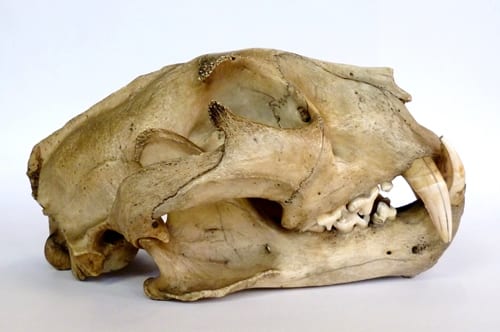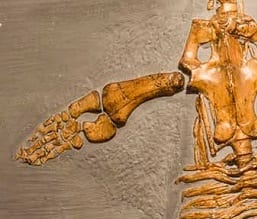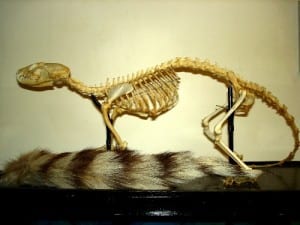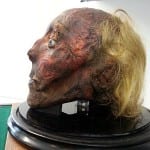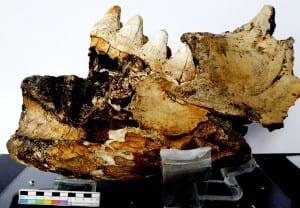Event – Staring at the Sky – Astronomy at the UCL Observatory
By Nick J Booth, on 25 September 2015
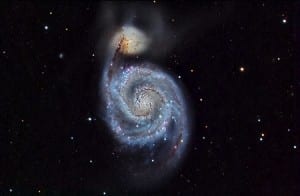
The Whirlpool Galaxy lies 30 million light-years away.
It was the first galaxy in which spiral structure was discovered in 1845.
UCL’s astronomical observatory was inaugurated in 1929, and it has been conducting research and teaching students ever since. On Friday 2nd October the Observatory and UCL Public and Cultural Engagement department will host a pop-up event which will feature staff and research students from the Observatory, and hopefully (if the weather behaves) give visitors the chance to make some solar observations with a specialised telescope.
Astronomy was originally taught on the main UCL site, using equipment in the two domes in the front quad (built 1905-07) together with one on the roof of the Wilkins Building (destroyed during World War 2). However, the light pollution of central London began to cause issues and a new site was required. A suburban site in Mill Hill site was chosen, in part because it was far away enough from London that the night sky could be observed without excessive pollution. Since then, London has grown, and the Observatory now sits well inside the M25; however it continues to be a great asset for teaching Physics and Astronomy students.
The Observatory currently houses five telescopes: in order of when they were acquired, the Fry 8-inch refractor telescope (acquired 1930 but originally built in 1862), the Radcliffe telescope (acquired 1938, built 1901), the Allen 24-inch reflecting telescope (1974/75) and two modern, computer-controlled C14 telescopes (acquired 2006 and 2010).
The Observatory made news recently when a team of students, being trained by Dr Steve Fossey, spotted a supernova (exploding star) in nearby galaxy Messier 82 (also known as the Cigar Galaxy). Images of the galaxy (with supernova) will be available on the day; they will also form part of an accompanying exhibition in the South Cloisters, of images taken at the Observatory, running from late September.
The pop-up event will be open (rain or shine) between 11.30am – 4.30pm on Friday 2nd October, in the Wilkins North Observatory (in the front quad on campus).
Nick Booth is curator of Teaching and Research Collections.
Specimen of the Week 206: The leopard skull
By Will J Richard, on 21 September 2015
Hello! Will Richard here. Taking my turn to bring you another specimen of the week. And what can I say about this week’s specimen?
Very little… on with the blog!
This week’s specimen is…
**the leopard skull**
Specimen of the Week 205: The Plesiosaur
By Tannis Davidson, on 14 September 2015
This week’s Specimen of the Week is one of the largest single objects in the Grant Museum, but it is one which is often overlooked. Tucked away along the wall behind the large elephant skull, many who visit the Museum miss it as they are drawn to the illuminated cave which is the Micrarium. The warm glow of over 2300 backlit microscope slides attracts the eye, but also diverts attention from the dim end-of-corridor/rope-barrier/back-entrance-to-the-office area which is home to the specimen of which I speak.
This week’s Specimen of the Week is…
Robert Noel and the ‘Science’ of Phrenology
By Nick J Booth, on 9 September 2015
This is a guest blog written by Dana Kovarik, a UCL student who has been volunteering with UCL Teaching and Research Collections over the summer holiday.
Having been introduced to UCL’s collection of Robert Noel’s phrenological busts during a literature seminar on Victorian crime (e.g., The Strange Case of Dr. Jekyll & Mr. Hyde), I found there was still much work to be done in unravelling the mysteries of the collection. While the heads have been catalogued and a book by Noel outlining the biographies of each specimen was found at the British Library, details about his life and career were slim. Upon volunteering, I was tasked by Nick Booth of UCL Museums with conducting a literature review. This involved finding articles by Noel and writings that reference his work throughout his career (roughly 1834-1880), in addition to mapping the developments of phrenology in Continental Europe during this time.
Happy 79th Thylacine Day: What they knew in 1896
By Jack Ashby, on 7 September 2015
79 years ago today , on the night of 7th of September 1936, the last known thylacine died of exposure, locked out of the indoor part of its enclosure in a Tasmanian zoo. This followed a government-sponsored cull based on pressure from the farming lobby, who incorrectly blamed the thylacine for the failure of the sheep industry. Happy Thylacine Day.

Thylacine as depicted in J.G. Wood’s The Illustrated Natural History (1872?). Engraved by W. Coleman, after Robert Kretschmer (1865)
Here at the Grant Museum, as holders of a significant collection of specimens, we like to commemorate Thylacine Day. Here you can read how we have commemorated previous Thylacine Days – including the story of their extinction, and how it’s being echoed today in the UK’s unscientific badger cull (which restarted last Friday).
I recently bought book from 1894* – A Handbook to the Marsupialia and Monotremata – a species by species account of what was then known about those groups by Richard Lydekker. Lydekker was a significant figure at the Natural History Museum, London, and incidentally was born about 100m from us here at UCL. Here is what he had to say about thylacines: Read the rest of this entry »
Specimen of the Week 204: The ringtail skeleton and tail skin
By Jack Ashby, on 7 September 2015
For the past couple of weeks we’ve been closed to the public while works began to replace our ancient heating system. This means that my favourite parts of the Museum (basically where the marsupials are) have been out of bounds, and so I’ve had to branch out somewhat beyond my usual cabinet to select my Specimen of the Week.
I’ve kept it topical, to link with recent zoological (specifically genital) social media trends, and also to an animal that shares its name with a group of marsupials.
This week’s Specimen of the Week is… Read the rest of this entry »
A Conservation inspection of Jeremy Bentham’s Mummified head
By Nick J Booth, on 6 September 2015
I’ve wanted to write blog specifically about Jeremy Bentham’s head for a while now. ‘Can I see the head?’ is one of the most common questions I get asked. I’m not sure why it has such fascination for people – perhaps as our manager of the Grant Museum recently tweeted when he met him, ‘Face to face with one of the world’s greatest philosophers’, how often do you get to say that? Is it that we want to be able to look someone famous in the face, even if they’re dead? Or is it just that a mummified head is unusual?
Last week Bentham’s head came out from the safe it is usually stored in for a full inspection by one of our conservators, Emilia Kingham. We regularly inspect the head, to ensure it remains stable. It’s survival for the future is our main concern! The inspection (and Buzzfeed story) generated a lot of interest and questions. For the story Emilia and I were sent a list of questions, which I thought were all very interesting and worth posting on our blog. The answers are from us both.
Behind the Mask – Research into the Noel Collection
By Nick J Booth, on 2 September 2015
This is a guest blog written by Bryony Swain, a UCL Student Volunteer who spent most of the last academic year (2014/15) cataloguing the Noel Collection of Life and Death Masks.
Hello, I’ve been volunteering with the UCL Museums and Collections department and loving it!
I have been cataloguing the excellent Robert Noel phrenological collection, which contains a large selection of plaster life and death masks from the mid 19th century. Phrenology studies the theory that skull configurations can determine character traits, and Noel made his collection to test and demonstrate the validity of this theory and wrote a book with measurements and biographical summaries to accompany them. Today, phrenology is considered a discredited pseudoscience, but in the 19th and early 20th century it was taken very seriously. Noel ordered the masks into different categories to prove that intellectual and moral individuals had a different skull shape to criminals and suicides.
Specimen of the Week 203: Mastodon jaw fragment
By Dean W Veall, on 31 August 2015
Hello Specimen of the Week readers, Dean Veall here. Unfortunatley we had to be closed over the last week (and also this coming week) for some essential heating works. As part of the process we needed to empty some of our cupboards, (I say we, mostly Tannis Davidson, Curatorial Assistant), in the emptying I came across this week’s specimen of the week and what a treat of a specimen it is with a great name and backstory. This week’s Specimen of the Week is…….
Underwhelming Fossil Fish of the Month: August 2015
By Mark Carnall, on 28 August 2015
And now. The end is near. It’s time to face. The final curtain. Lallaalala. De da da da de dada da. De dada dadada of which I’m certain. Hmmm hmm hmmm hmm hmm. Dah dah de dah dah da da. Da de de de and then a highway. BUT MORE, MUCH MORE THAN FISH, WE DID IT OURRRRRR WAY!
This is a very special underwhelming fossil fish this month, not normally something I do here given the aim of this monthly series of blogs about the Grant Museum’s overwhelmingly underwhelming fossi fish collection is to keep it low key and on the underwhelming side. Even if the series did recently feature on VICE magazine’s Motherboard channel, with bonus IN DRAWER photographs. However, this is my last underwhelming fossil fish of the month blog post as the curator of the Grant Museum. I’m off to pastures new with far less in the way of fossil fish, underwhelming or otherwise.
But that’s no reason to get too sentimental. So stiff upper lip, wipe away those fake allergy tears and let’s unceremoniously take a look at this month’s underwhelming fish fossil. Stretch your eyes and try to stay awake through this… Read the rest of this entry »
 Close
Close



